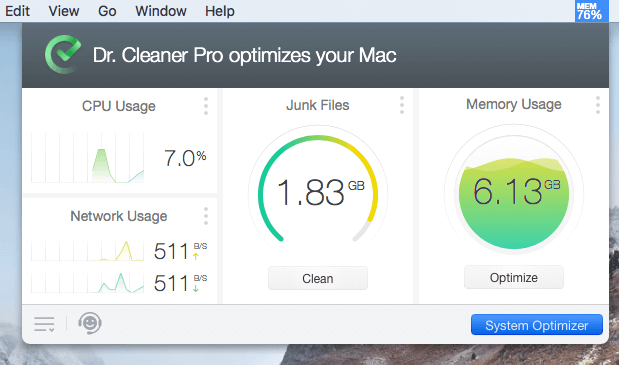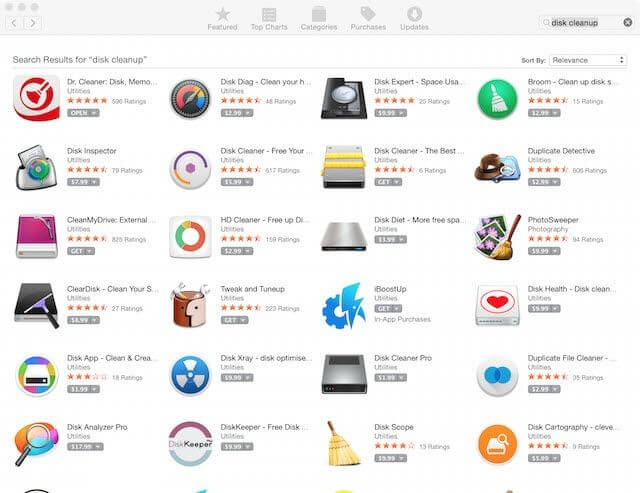

- Dr.cleaner mac mem number drivers#
- Dr.cleaner mac mem number full#
- Dr.cleaner mac mem number for windows 10#
- Dr.cleaner mac mem number windows 10#
- Dr.cleaner mac mem number windows#
Dr.cleaner mac mem number windows#
Windows Server, version 1803 (Semi-Annual Channel) or later
Dr.cleaner mac mem number windows 10#
Windows 10 Enterprise, version 1709 or later You can set attack surface reduction rules for devices that are running any of the following editions and versions of Windows:
Dr.cleaner mac mem number full#
Enable “Scan removable drive during a full scan”.Click on Microsoft Defender for Antivirus.
Dr.cleaner mac mem number for windows 10#
Dr.cleaner mac mem number drivers#
+ Select Allow installation of devices using drivers that match these device setup classes, and then select Enabled. – You could restrict all USB devices by type with class IDs: – When you select Create, your changes are saved and the profile is assigned. – In Review + create, review your settings. – In Assignments, select the device groups that will receive the profile, and then select Next. Look up the device vendor ID or product ID for devices that you want to allow, and then add the IDs to the list. Select Allow installation of devices that match any of these Device IDs, and then select Enabled.Select Prevent installation of devices not described by other policy settings, and then select Enabled.– In Computer Configuration System Device Installation Device Installation Restriction, configure the following settings: Enter a description for the profile in Description (this setting is optional). In Basics, enter a descriptive name for the profile in Name. – Select Windows 10 and later in Platform, select Administrative Templates in Profile , – Devices > Configuration profiles > Create profile. – Sign in to the Microsoft Endpoint Manager admin center. You could do the same restriction using Microsoft Endpoint Manager ( MEM ) – Configuration Profile Ad ministrative Template ( ad mx ) To Control USB Drive Access by MEM Administrative Template:.T o specify the allow list of USB drives, copy the hardware ID values and paste to the Device ID list in the policy setting named “Allow installation of devices that match any of these device IDs ”, as shown here:.TIP : To prevent typo error due to the long name with a lot of underscore characters, you could use registry key instead Computer HKEY_LOCAL_MACHINESYSTEM CurrentControlSet EnumUSBSTOR

rrrr is a 4-digit hexadecimal number that contains the revision number of the device.pppp is a 4-digit hexadecimal number that identifies the product.vvvv is a 4-digit hexadecimal number that identifies the vendor.An example of Hardware ID is shown here:ĭuring OS plug and play enumeration process, t he vendor ID, product ID, and revision number values are obtained from the USB device descriptor and record to Windows Registry. You could gather the Device Hardware ID by Windows Device Manager as per Paul Bergson document and enter the information to the policy setting.To allow only specific USB drive s based on Vendor ID or Device ID, y ou will need to configure at least 2 of the following setting s:.To Control Access to USB drive, In Computer Configuration > Policies > Administrative Templates > System > Device Installation > Device Installation Restriction s.I high light the following capabilities of them: Today, we would discuss all things about USB flash drives management including access protection, Bitlocker encryption, AV security, and troubleshooting.įirstly, we should not reinvent the wheel, so we start with Paul Bergson’s excellent Tech blog article “ Manage USB Devices on Windows Hosts ”, b ased on the document, you could use GPO, MEM Configuration Profiles Admx (Administrative Template) for controlling access to USB drives on windows 10 devices. See the original author and article here.


 0 kommentar(er)
0 kommentar(er)
